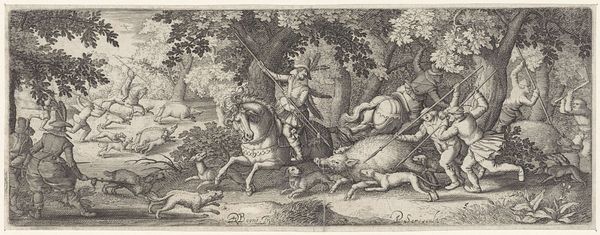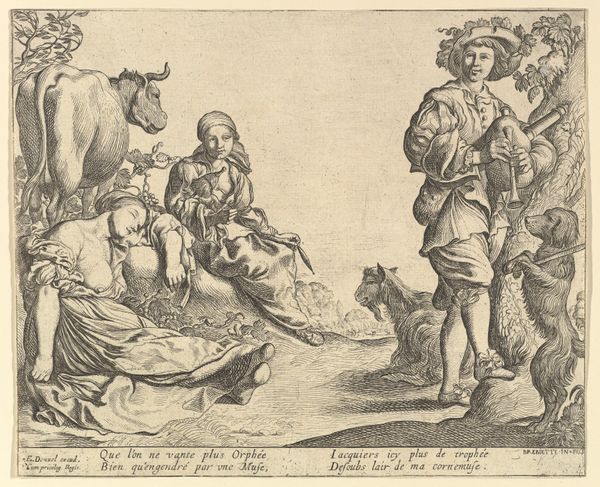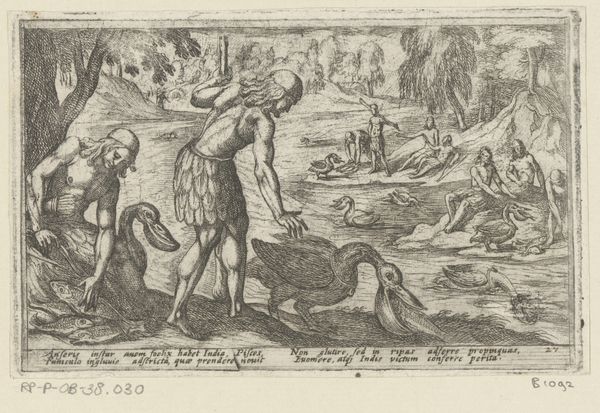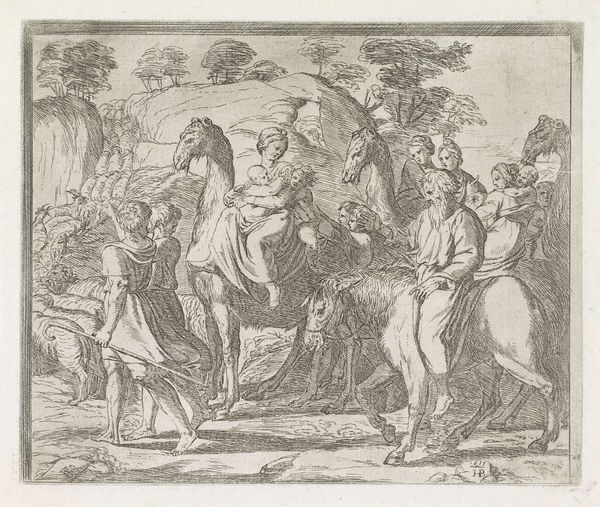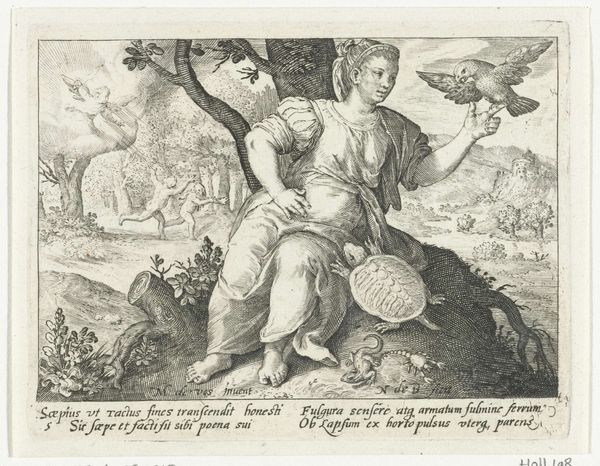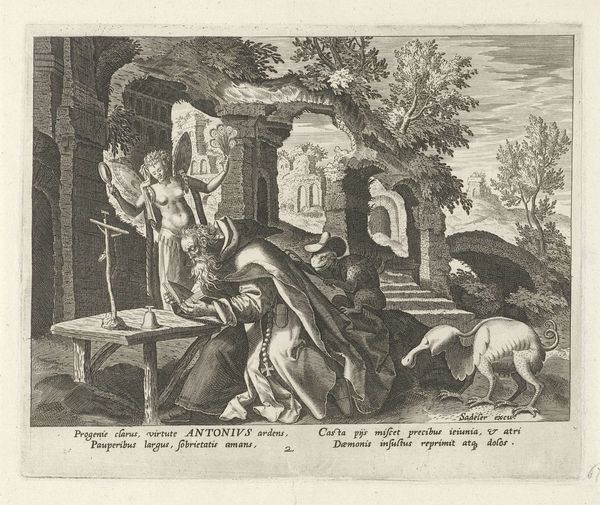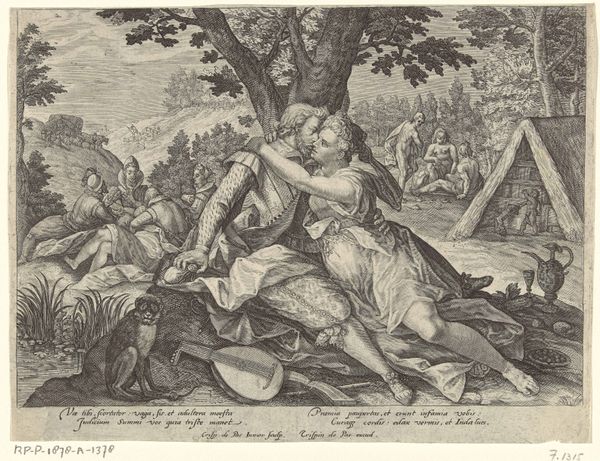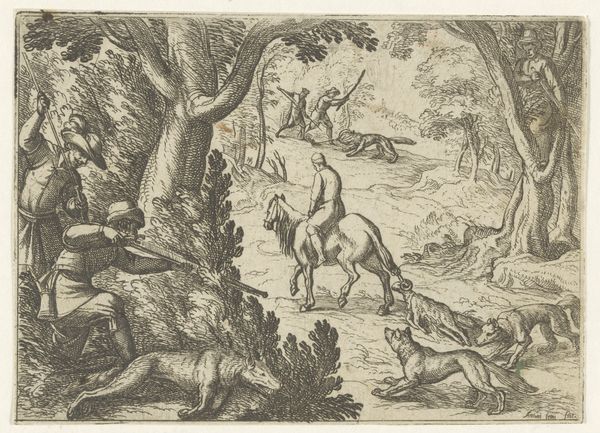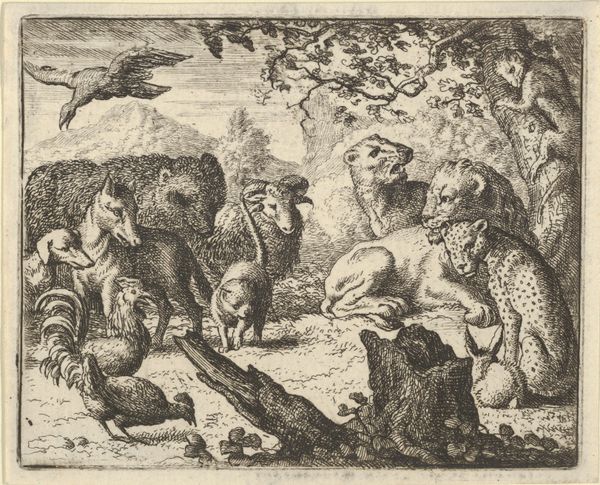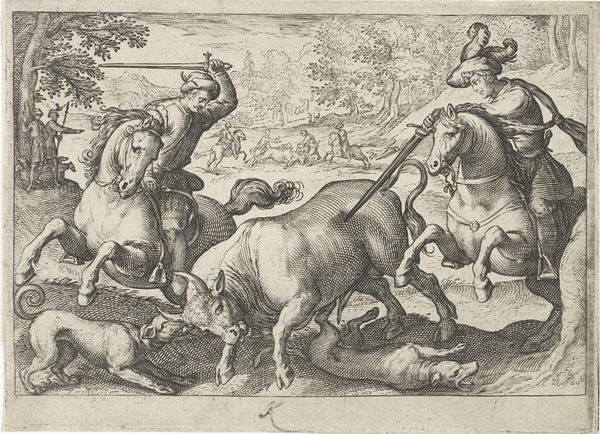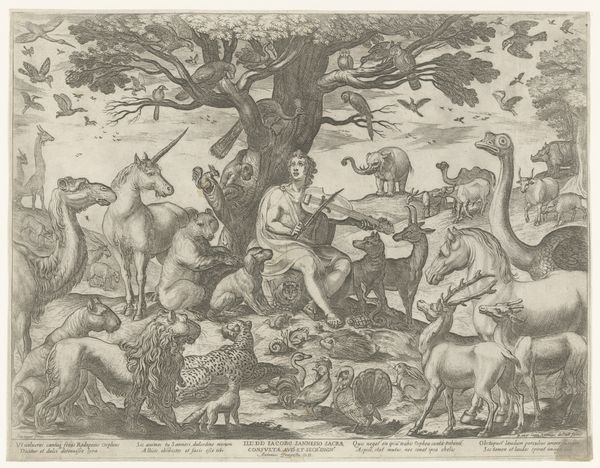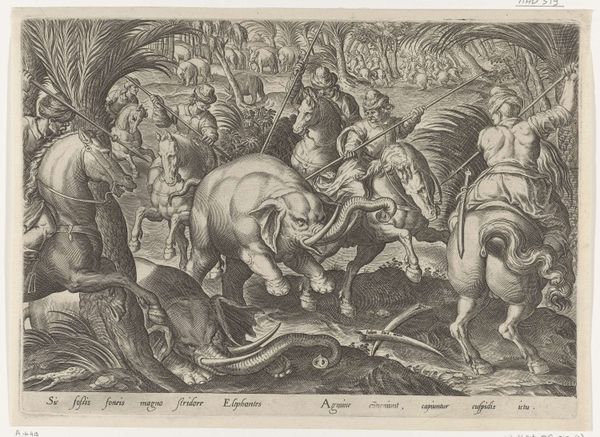
print, engraving
#
baroque
# print
#
old engraving style
#
landscape
#
figuration
#
genre-painting
#
history-painting
#
engraving
Dimensions: height 84 mm, width 126 mm
Copyright: Rijks Museum: Open Domain
Curator: This engraving, dating back to 1612, is entitled “Pales,” and was created by Simon van de Passe. It's part of the Rijksmuseum collection. Editor: It's striking how densely populated this image is. I am fascinated by how much the engraver could squeeze into the composition of such pastoral subject matter. Curator: Right, and that density contributes to the piece’s purpose. The depiction of Pales, a Roman deity associated with pastoralism, reflects a complex interaction between the artistic conventions of the era and the function of agricultural practices. I am compelled to inquire whether the representation of a deity could reflect any symbolic tension around cultural history and gender? Editor: The engraving process itself also carries a strong historical context. Engravings were a key means of distributing images and information across Europe. It wasn’t only a representation, it was a mass produced consumer good which raises questions of accessibility to society during its making. We are reminded how essential images are as both art and informational objects during early modern times. Curator: Indeed. Looking at the practical aspect, the skill required to depict the textures of the various animals - the wool of the sheep, the hide of the horse - shows the mastery required to be able to produce detailed lines in engraving to translate an image from other media. Also, the tools, metal plates, ink... the whole economy involved is central to the rise of commercial art markets in the 17th century. It allows me to really understand what the social reach was in a completely new light. Editor: And Pales herself, in this image, becomes a kind of…symbol. She's not just a goddess; she represents the prosperity, control, and even anxieties related to agriculture in society. Curator: So, in looking closer at “Pales” we see not only artistry on display but also begin to understand social production of an image. Editor: And that allows us to consider its continuing influence on the formation and dissemination of pastoral life and imagery to contemporary social awareness.
Comments
No comments
Be the first to comment and join the conversation on the ultimate creative platform.
